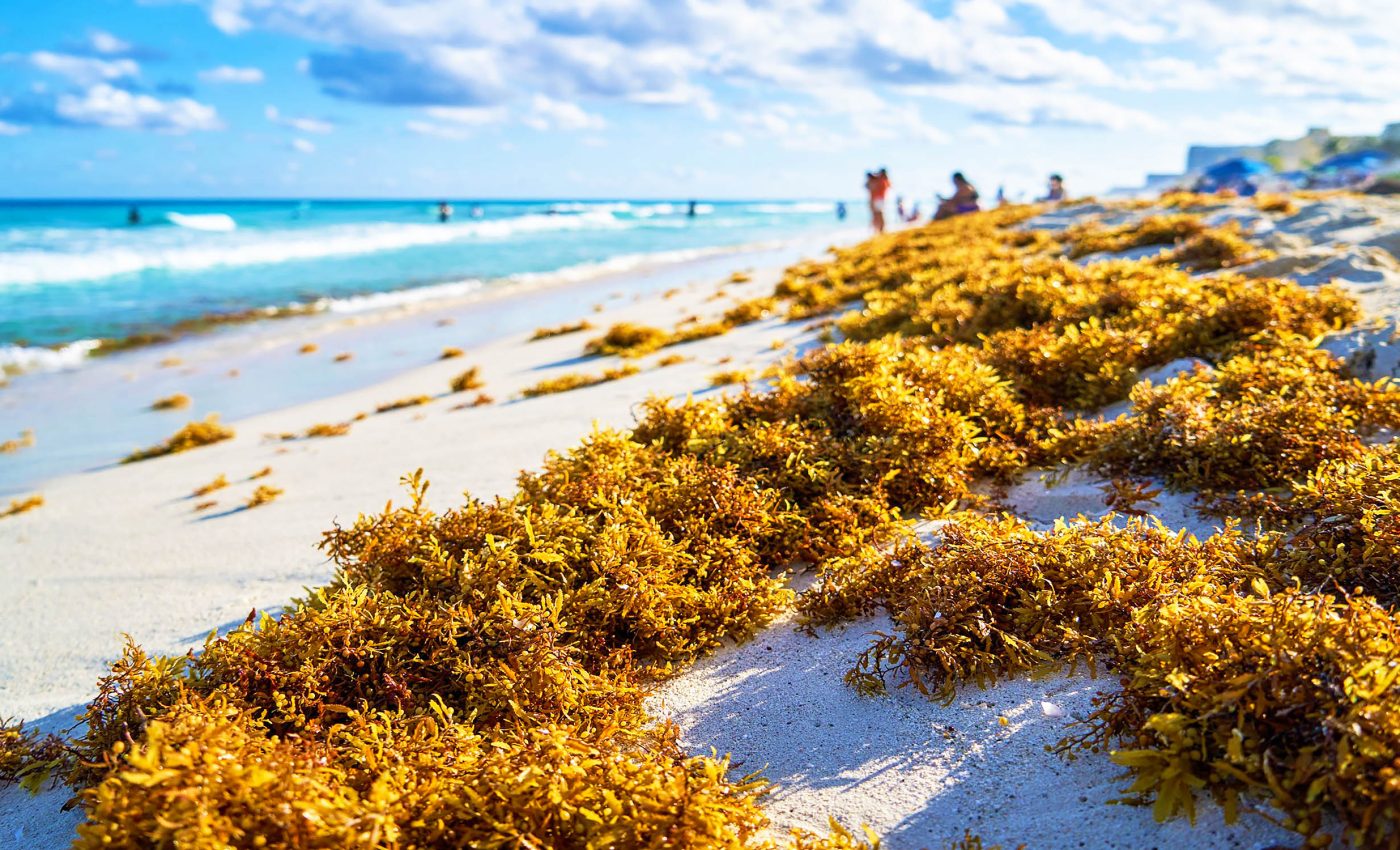
Sargassum seaweed is a growing problem seeking a sustainable solution
In recent years, vast swaths of sargassum seaweed have been causing significant disruptions along the coastlines of the Caribbean and West Africa.
This floating seaweed has been a part of the North Atlantic’s marine landscape since it was first noted by Christopher Columbus in the 15th century.
The explosive growth and overabundance of sargassum is tied to a combination of factors, including climate change and nutrient pollution.
Since 2011, this proliferation has intensified, forming what is now known as “the great Atlantic sargassum belt.” This massive bloom stretches approximately 9,000km and weighs an estimated 35 million tons, making it visible from space.
Challenges posed by sargassum seaweed
The presence of sargassum seaweed is not without its problems. It blocks fishing routes, hampers tourism, disrupts turtle nesting sites, and affects reefs and mangroves. Sargassum also emits a toxic gas that is harmful to both human health and electrical equipment.
Previously, smaller quantities of sargassum that washed ashore were beneficial to marine ecosystems. The seaweed provided natural habitats for various marine life and contributed to beach formation through its decomposition.
However, the unprecedented scale of sargassum blooms presents a formidable global challenge with severe implications for affected regions.
Scientific exploration and discovery
An international team of researchers has embarked on a significant research endeavor. The experts set out to analyze the biomass composition of sargassum in an effort to explore its potential for sustainable product development.
Despite its abundance, the utilization of sargassum is limited due to its high arsenic content. This poses a challenge to its application in safe and environmentally friendly products.
Dr. Carla Machado, the first author of the study, emphasized the shift in the role of sargassum due to its increased volumes.
“The vast sargassum blooms of the past decade are a global problem that will continue to grow and have a major impact in the affected countries,” noted Dr. Machado.
Insights from the study
The researchers applied a variety of methods to process sargassum, such as shade-drying and freezing, to determine the best way to preserve its protein content while potentially reducing other unwanted elements like arsenic.
The results of the study indicate that the seaweed’s biochemical composition remains consistent throughout the year. This means that if it is processed correctly, sargassum could be transformed into valuable biomaterials.
An intriguing discovery was made during the study period, which coincided with the April 2021 eruption of La Soufrière volcano on the Caribbean island of Saint Vincent.
The team found that sargassum exposed to volcanic ash had reduced levels of arsenic but had accumulated other minerals like nickel and zinc. This finding opens new avenues for understanding how environmental conditions affect sargassum’s composition.
Mitigating sargassum’s impact
Lead researcher Dr. Thierry Tonon from the Department of Biology at the University of York highlighted the broader environmental interactions at play. “With the great sargassum belt also receiving nutrients from Sahara dust blown across the Atlantic, the issue of seaweed wash-up is likely to persist as a new normal.”
The research not only expands our understanding of sargassum but also paves the way for potential solutions to mitigate its impacts.
The identification of a “volcanic tag” in the sargassum that reaches Jamaican shores after a months-long journey across the Atlantic underscores the marine connectivity of the region and points to the longevity and resilience of this seaweed.
As researchers continue to unravel the complex behaviors of sargassum seaweed and its interactions with environmental factors, the knowledge gained will be crucial in shaping an international response to the challenges it presents. The ultimate goal is to transform this marine nuisance into a valuable resource.
How did sargassum become such a big problem?
Many factors have contributed to the significant increase in sargassum blooms observed in recent years, affecting coastal regions with massive influxes that can impact local ecosystems, tourism, and fisheries.
Nutrient enrichment
Increased levels of nutrients in the ocean, especially from agricultural runoff, sewage, and other sources of pollution, provide fertile conditions for sargassum growth. Nutrients such as nitrogen and phosphorus act as fertilizers, boosting the seaweed’s growth rates.
Ocean currents
Sargassum is highly mobile due to ocean currents. It originates in the Sargasso Sea, where it reproduces and grows, and then spreads via currents such as the Gulf Stream, which carries it into the Caribbean Sea and further into the Atlantic Ocean.
Climate change
Rising sea temperatures and altered ocean currents, both consequences of climate change, may create more favorable conditions for sargassum to thrive and spread. Warmer waters can enhance the growth rate of the seaweed.
Reproductive strategy
Sargassum reproduces efficiently through fragmentation, meaning that parts broken off by waves or other disturbances can start new colonies wherever they drift.
—–
Like what you read? Subscribe to our newsletter for engaging articles, exclusive content, and the latest updates.
Check us out on EarthSnap, a free app brought to you by Eric Ralls and Earth.com.
—–













